Vale Taras Ochota
On Tuesday October 13th, Taras Ochota (2013 Young Gun of Wine) parted with this world after a long illness, leaving behind Amber, his beloved partner in wine and life, and his adored children, Sage and Anouk.
Think of an iconic Australian invention, and you’ll likely go straight to the Hills Hoist, Victa lawn mower, Black Box or Vegemite. There is, however, another ‘Aussie’ invention that needs to be considered in the same iconic company – the wine cask, born in the 1960s when Thomas Angove, of Angove Family Winemakers, created a cost-effective, resealable plastic bag, packaged inside a cardboard box, designed as an alternative for the glass wine bottle. The low production costs of the cask gave the opportunity to make low-priced wine even more accessible. Within a decade, this led to an association of cask wine containing lesser-quality juice, and it soon became colloquially known as a ‘goon bag’ or, ironically, ‘Card-Bordeaux’.
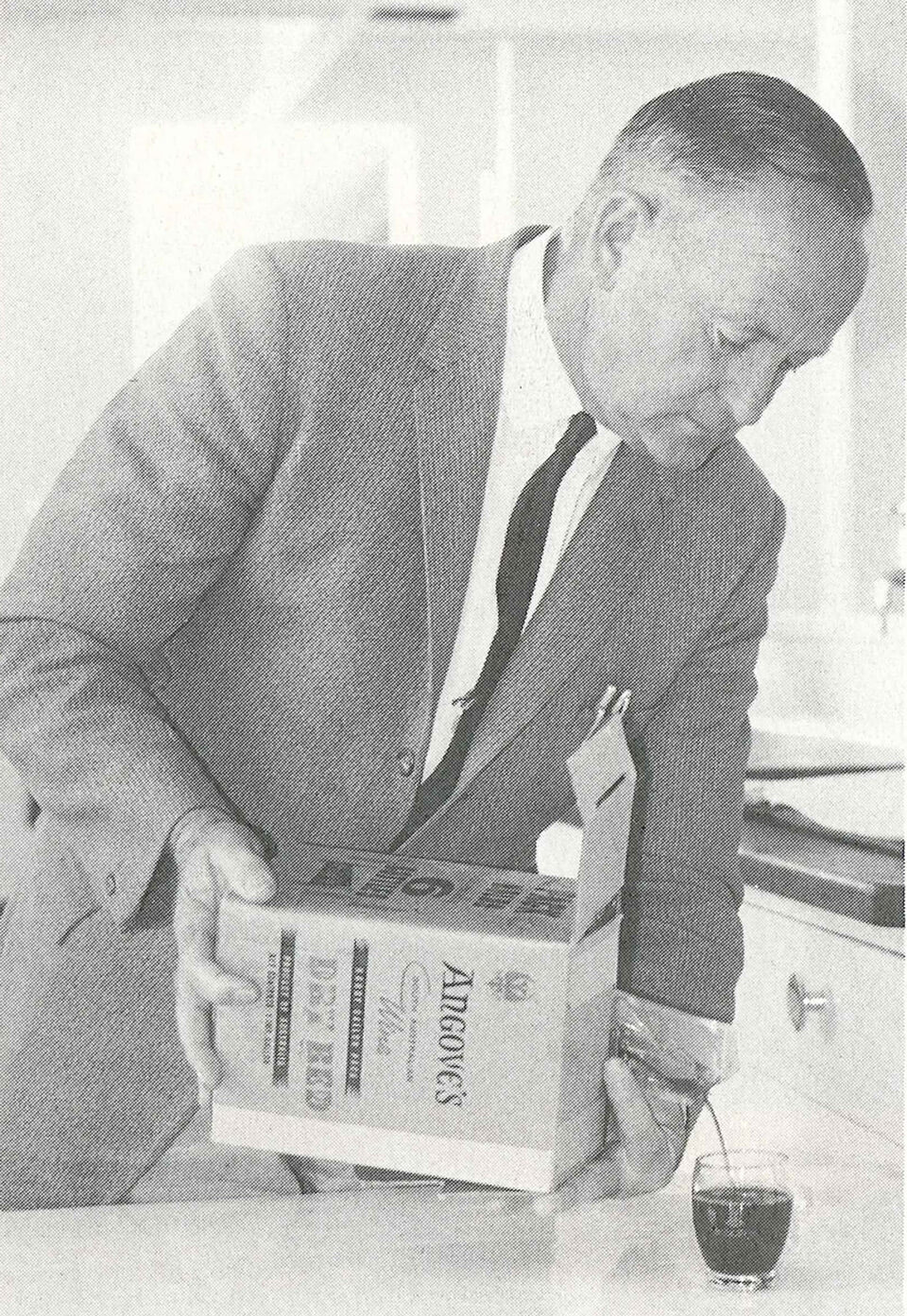
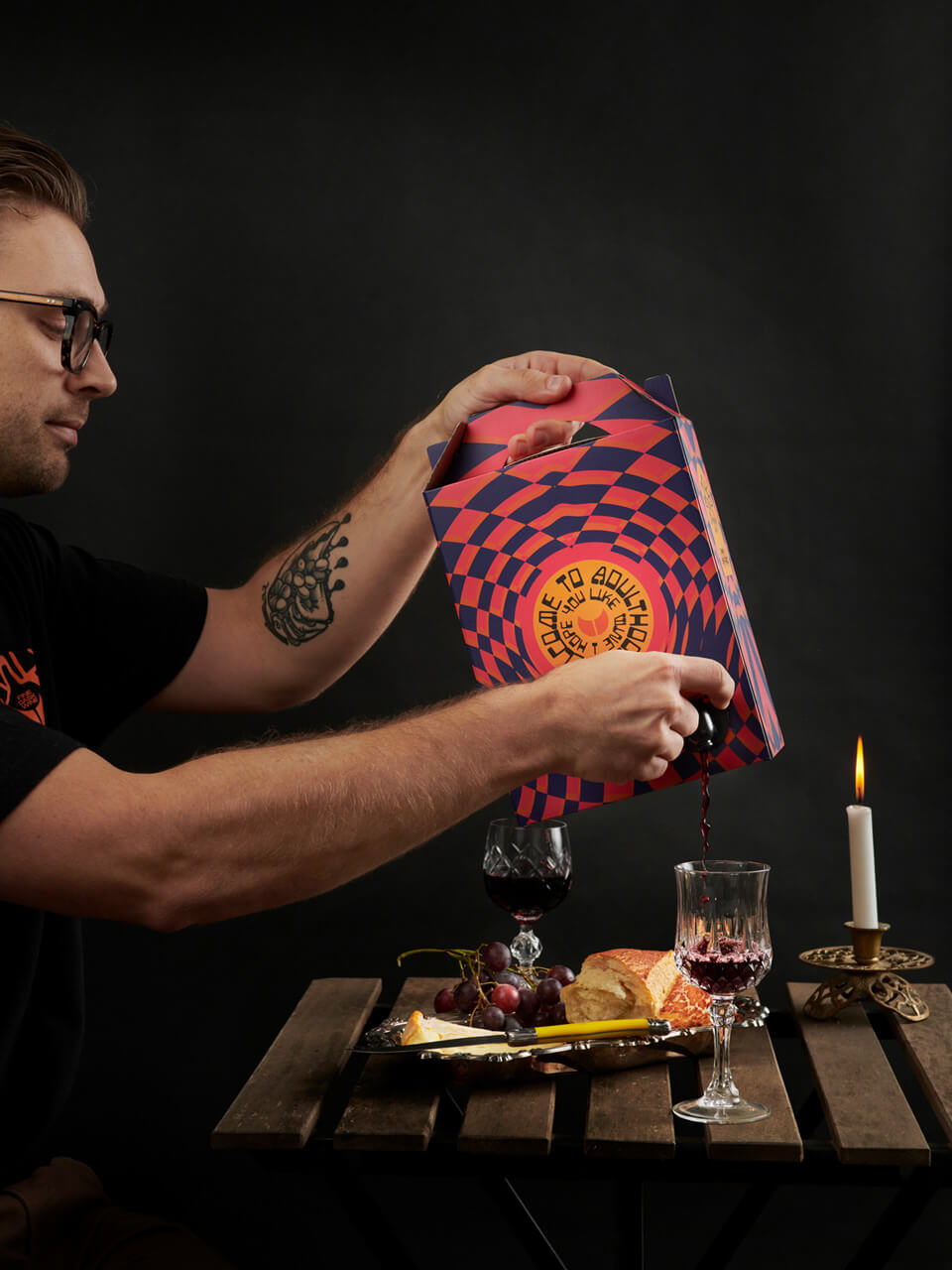
Move forward to 2021 and Marcus Radny of Gonzo Vino is changing the game when it comes to cask wine. Gonzo Vino is looking transform the perception of cask wine by bringing it into the 21st century through a focus on quality, fun and sustainability. Radny started Gonzo Vino while working as head sommelier at Jackalope Hotel on Victoria’s Mornington Peninsula. He found himself faced with the conundrum of wine-thirsty guests lounging by the pool but being forbidden by OHS restrictions from having any glass objects in the vicinity. When looking for non-glass wine options that he would be proud to serve, Radny found ‘a whole lot of not much’ on the market – which he saw as an opportunity.
Radny’s first production idea was a juice box–style container. He was flying by the seat of his pants trying to make it work without the proper equipment, and borrowing space in a winery where he was doing vintage at the time. Radny explains, “I bought a tonne of pinot (noir) and ran it through the de-stemmer. I took all the free-run juice out of it, vinified it, and packaged it at the winery through a syphon out of a variable-capacity tank. It was a nightmare. Not having the right equipment, not having the right amount of people… breaking new ground as a wine product was difficult.”
Radny knew that he would need to look at other options. In 2019, Radny bought five times the amount of fruit from the previous vintage – but he didn’t have the funds to purchase new equipment. So, he hesitantly decided to bottle his wine. “I went against my original plans and ended up just putting another new-wave wine made by an ex-sommelier on the market. I kind of resented myself for a little while after that, because I became the thing that I didn’t want to become. I sent it to Stu Northey at Anonymous Wine, who was amazing, and it sold out in three months, which left me with a lot of time to think about what I wanted to do for 2020,” Radny explains. With this extra time, he was able to take stock and consider the future – deciding that from 2020, Gonzo Vino was to be a 100 percent cask wine proposition.
“I bought a tonne of pinot (noir) and ran it through the de-stemmer. I took all the free-run juice out of it, vinified it, and packaged it at the winery through a syphon out of a variable-capacity tank. It was a nightmare.”

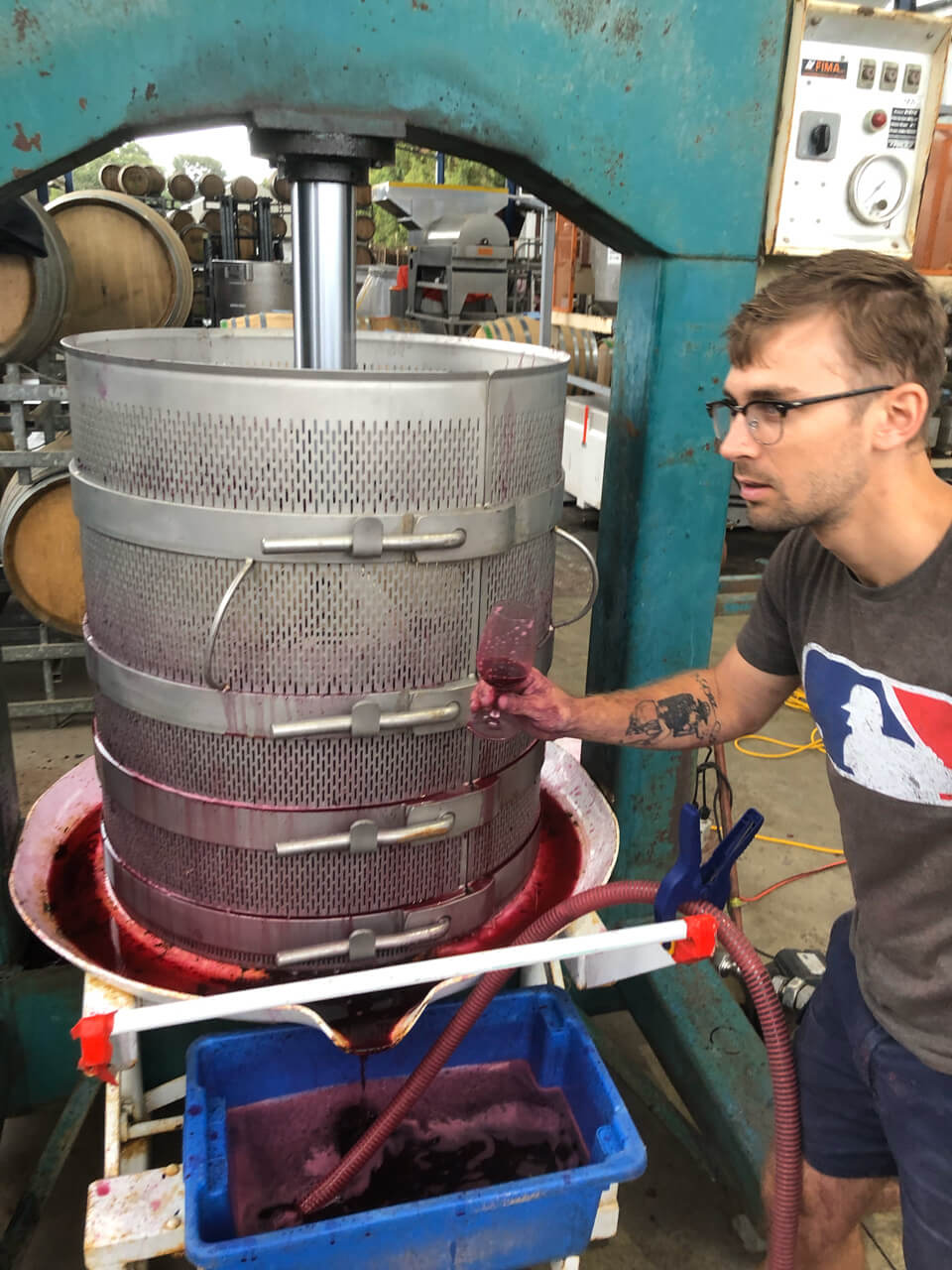
“I went against my original plans and ended up just putting another new-wave wine made by an ex-sommelier on the market. I kind of resented myself for a little while after that, because I became the thing that I didn’t want to become.”
Gonzo Vino casks are unashamedly loud and bright. The design treads a line somewhere between a 1960s psychedelic trip and something magicked up by science fiction writer Philip K. Dick – think Austin Powers meets Total Recall. Radny explains how he uses the sheer size of the cask to his advantage: “It gives you so much more footprint to convey the message of the brand. You have 18 to 24 centimetres of advertising to use.” The Gonzo Vino wines are made in a bright, youthful and vibrant style intended for early consumption. Given that over 90 percent of wine purchased in Australia is consumed within the first four days, cask wine’s 12-month shelf life (due to the bag’s permeability) is an issue that Radny is “not overly concerned” about.
Transforming perceptions of a format associated with simple and affordable wine to something in a more premium space that would be considered ‘cool’ to buy is no easy task. However, Gonzo Vino is already starting to break ground, having sold out of all their wine from 2020, with the 2021 vintage soon to hit the shelves. The brand is using both the packaging and the juice to engage a younger audience. Radny explains, “It’s a multifaceted approach to the brand. The packaging is in your face – it’s colourful, it’s wacky, it’s wild. It’s also the grape variety and the style. With some brands you can buy a five-litre cask of dry white for $15; we can’t compete with that. We are making funky and fun wine styles. This year we are doing a ‘skinsy’ zibibbo, a vermentino, and malbec three ways.”
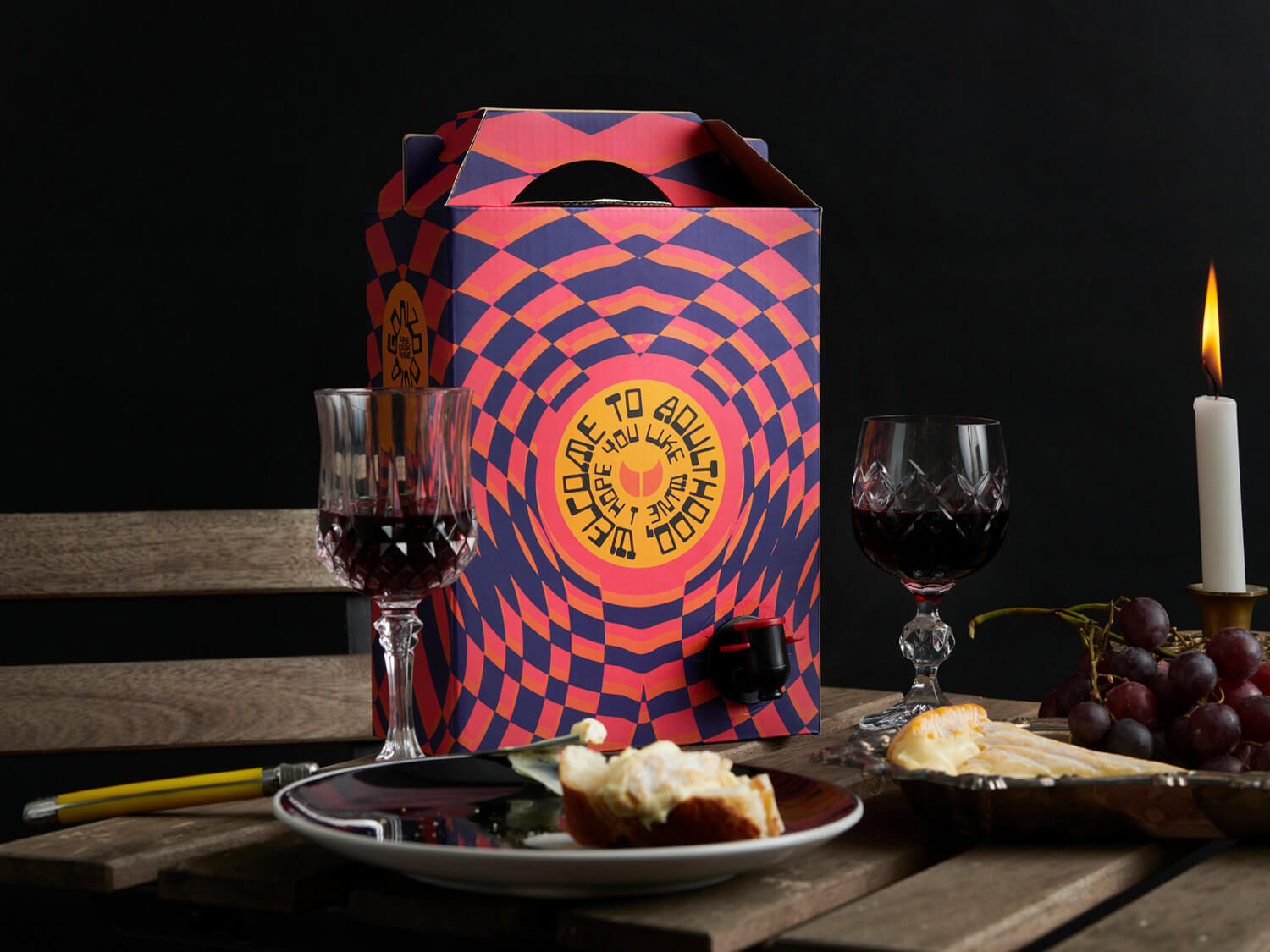
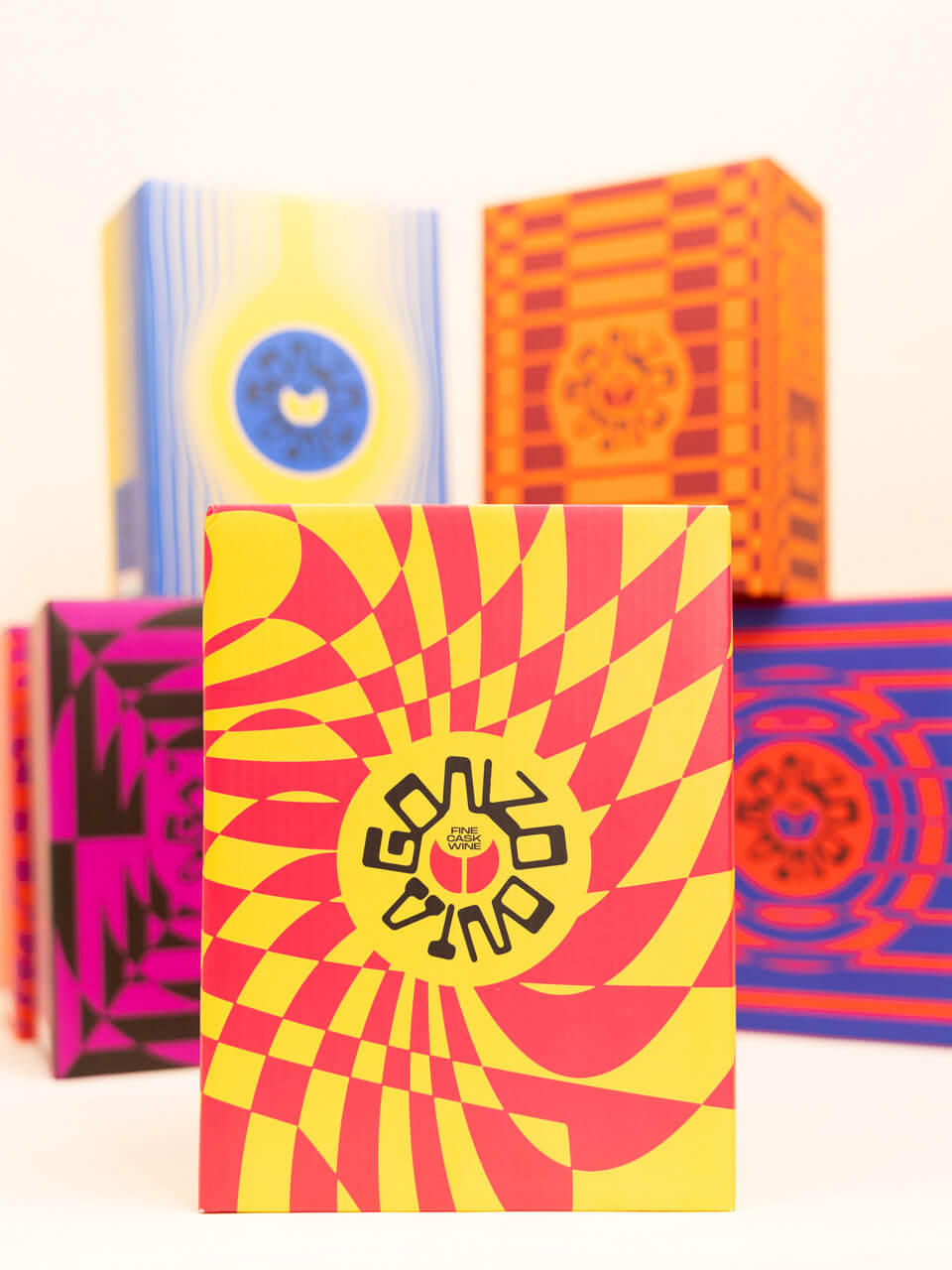
“This year we are doing a ‘skinsy’ zibibbo, a vermentino, and malbec three ways.”
Gonzo Vino’s target customer is a generation that is environmentally conscious. While glass can be recycled, in Australia that is not always the case, Radny explains. “It’s always been at odds with how damaging glass is to the environment, and when Australia stopped recycling glass, it was kind of like our industry was now sitting on juxtaposed sides of the same argument, where you are trying to produce wines that are environmentally conscious and friendly that don’t have additions, but then all of your glass just ends up in landfill because it’s too expensive to recycle.”
According to the WWF, in 2017/18, under 10 percent of glass and plastic produced in Australia was recycled. Of that 10 percent, over half was sent overseas for processing. At around the same time, China, Malaysia and Thailand dramatically decreased the amount of recyclable material they were taking from other countries. This left Australia with more recycling than we could handle, and subsequently led to a large portion going into landfill. This is a problem we are still facing today.
Radny’s point can be further emphasised when taking a deeper look at the numbers. A three-litre cask weighs in at only 50 grams, whereas four bottles of wine (volume equivalent of a three-litre cask) weigh in at around 2.5 kilograms. Nearly all glass bottles and casks used for wine production in Australia are produced overseas. If you consider that in 2018, the Australian Bureau of Statistics found that, on average, adults in Australia consume 38 bottles of wine each year, you can start to imagine the carbon footprint that is produced by transporting these bottles – first to Australia, then to the production sites, then to the retailers, and finally to the consumers. The reduction in carbon emissions that could be saved by drinking cask wine (in place of bottled wine) is significant.

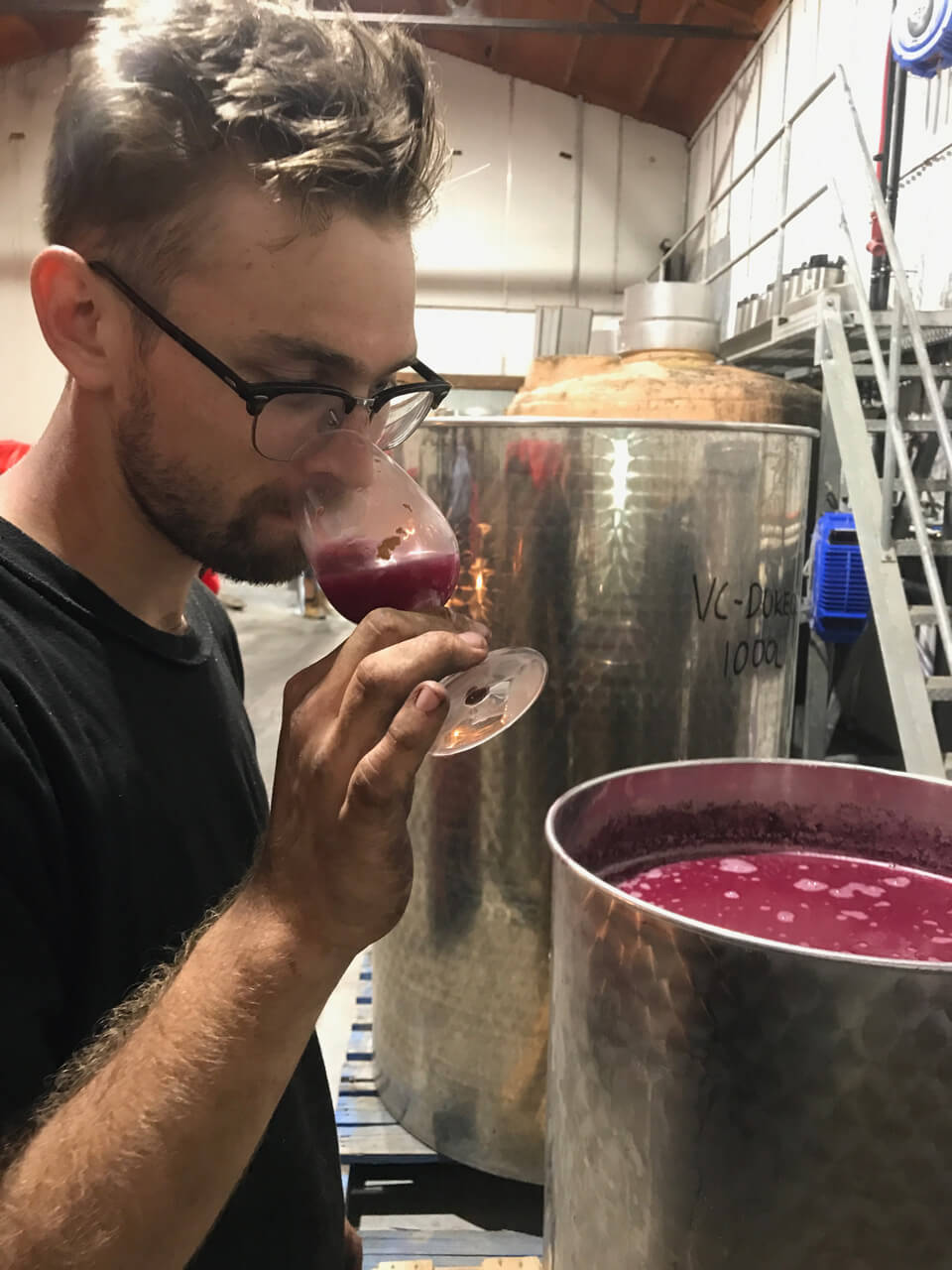
A serious amount of energy and emissions are also created when producing glass. Scholle IPN (a flexible packaging supplier) states on their website that by using cask as an alternative to glass, there is an 86 percent reduction of total energy used, an 88 percent reduction in greenhouse gases, and a 97 percent reduction in post-consumer solid waste.
The production and delivery costs of casks are significantly lower than that of glass. Consider that one box of wine holds the equivalent volume of four glass bottles. A bottle at its cheapest is 60–80 cents, with 30 cents for a cheap label, $1 for a cork, and if you want a wax seal, you need to factor in the labour there, too – so you are looking at $2–3 per bottle. In comparison, Radny says that with his cask packaging costs, “you have bag, box, spout, printed, delivered and import taxes paid for less than $1 per box”. He adds, “For a new brand that is not flush for cash and doesn’t have any capital investment, every corner you can turn to save and not compromise quality is amazing.” This gives Gonzo Vino the capability of getting higher-quality fruit for their wines, and the ability to invest back into the business quickly.
Cask wine in Australia makes a lot of sense for the environmentally concerned consumer who is not worried about ageing their wine, especially if a fully biodegradable proposition can be created. The cost savings can make quality wine more accessible, while its lighter weight can significantly reduce our carbon footprint. It is also the perfect format for by-the-glass pours in bars and restaurants, enjoying at home when you don’t want to drink a full bottle, and outdoor occasions where glass can be impractical and even dangerous.
Gonzo Vino’s initial success proves there is a thirst for premium cask wine. If the proposition is right, and the juice is good, there is no reason why premium cask wine cannot be as common as a jar of Vegemite.
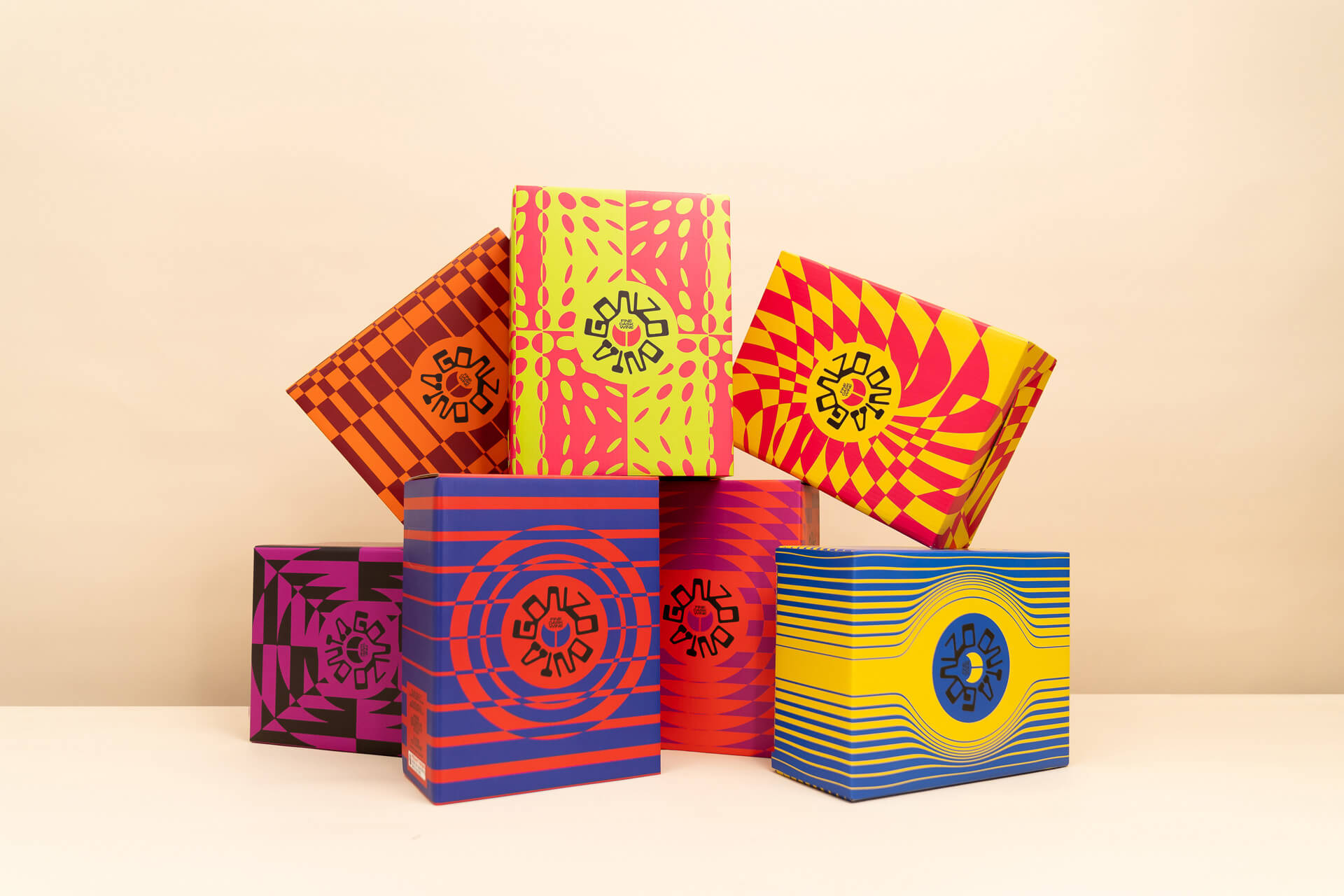
About New Voices in Wine
Applications are open for New Voices in Wine – our mentoring program to fast track the development of aspiring wine writers and publish their works at ygowstaging.wpengine.com. The process includes mentoring sessions designed to help develop a piece of writing, as well as provide the opportunity to tap into the broader wisdom of some of Australia’s very best food and wine writers, such as Richard Cornish and Sophie Otton, who were the mentors for this article. We want to find new voices to join the more familiar ones, to give new writers and communicators a chance to provide their own unique take on the world of wine. New Voices, we want you – apply now!
About James Vercoe
James Vercoe started his career in wine working in fine-dining restaurants in the UK. Back home, he ran the beverage programs at Port Phillip Estate and Paringa Estate on Victoria’s Mornington Peninsula. After working for over a decade as a sommelier/beverage manager, James managed leading wine importer The Spanish Acquisition for three years, before working for the Coles Liquor Group. James completed his WSET Diploma in 2018, and has just been accepted into the MW program. He also judges at domestic wine shows.
Please sign in or create account as candidate to bookmark this job
Please sign in or create account to save this search

Please sign in or create account as candidate to create a resume